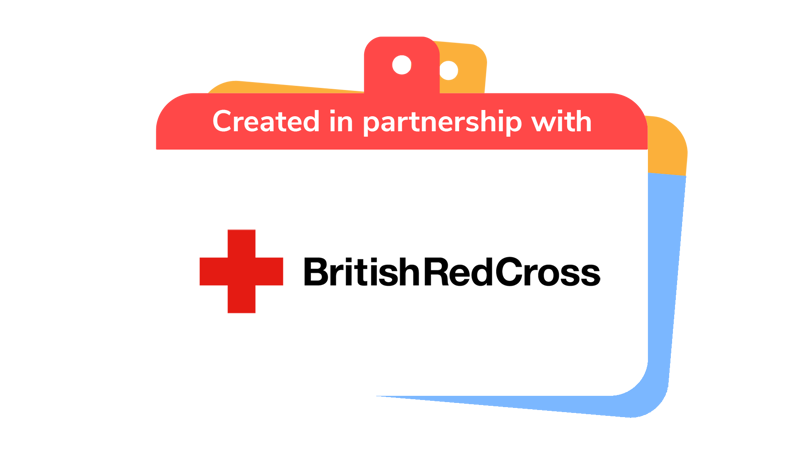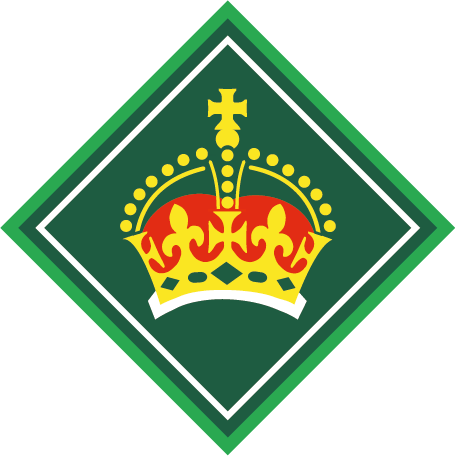
The power of kindness
You’ll need
- Access to a computer
- Scissors
- Coloured pens or pencils
- Pens or pencils
- Copies of the supporter leaflet, one per group
- A hat
Before you begin
- The person leading the activity should visit redcross.org.uk/get-help on the computer. Write down each of the services listed on the page on a piece of paper (eg ‘Borrow a wheelchair,’ ‘Get support at home,’ ‘Help refugees,’ ‘Help with loneliness,’ ‘Hire a commode,’ ‘Help in an emergency (e.g. flood),’ ‘Find my missing family’). Cut out each one and put them in a hat. Mix them up. You could also print off a copy of this page for reference.
Run the activity
- Everyone should split into small groups. The person leading the activity should bring forward the hat. One person from each group should pick a piece of paper from within the hat. Be careful not to let people from other groups see what’s written on yours!
- Each group should quietly rehearse a short, silent piece of role-play in which they act out the kind act on their piece of paper to the rest of the group. The rest of the group must then guess what is happening in the performance. Give everyone five minutes’ rehearsal time.
- Each group should act out their kind act to the rest of the group. The person leading the activity should write down the kind acts that have been performed, or collect the slips of paper from the groups that have already gone. When everyone has done their role play, the person leading the activity should ask everyone to try and guess what organisation might do all of these things (The British Red Cross). Discuss that to do this work, the organisation needs people like you to give kind gifts of time (volunteering), gifts of items or money to allow them to do their activities.
- The person leading the activity should hand out the ‘Supporter leaflet’ sheets to the groups. Explain how there are many ways to support the Red Cross to help so many people in so many different places.
- The person leading the activity should give out paper, pens or pencils and coloured pencils to the groups. Each group should now plan an event in support of the Red Cross. This could help reach out to vulnerable people in the community, collect used clothes or other items to donate to charity shops or anything else relevant your young people can think of. Each plan should include a list of requirements (eg equipment) and a sketch of what it might look like. Give everyone 20 minutes.
- One person from each group should explain what their plan is. Another should hold up the sketch, while a third person explains how hosting the event will help the Red Cross.

This activity helps contribute towards some of the UN's Sustainable Development Goals. Find out more about the SDGs, and how Scouts across the world are getting involved.


Reflection
The group has taken on one of the many roles performed by the Red Cross to help people who are in crisis. They then had to act out their role to the rest of the group. Was it hard to guess what the performing group was doing? Did anyone work out that these were all acts of kindness performed by the Red Cross? How did you and your group work together to demonstrate what the act looked like?
Groups then worked together to produce plans for Red Cross events. Events bring people together in support of the cause and can raise some useful funds, help hit Red Cross targets and find useful items. Was it easy to agree on the requirements and aims for your event? How did you present your idea to the rest of the group? Who do you think came up with the most effective idea to help the charity?
Safety
All activities must be safely managed. You must complete a thorough risk assessment and take appropriate steps to reduce risk. Use the safety checklist to help you plan and risk assess your activity. Always get approval for the activity, and have suitable supervision and an InTouch process.
- Scissors
Supervise young people appropriately when they’re using scissors. Store all sharp objects securely, out of the reach of young people.
- Active games
The game area should be free of hazards. Explain the rules of the game clearly and have a clear way to communicate that the game must stop when needed. Take a look at our guidance on running active games safely.
Add more details to make planning the Red Cross events more difficult. Groups could work with restricted budgets or with limited space.
Anyone struggling to come up with an idea for an event should use an example from the Supporting the British Red Cross sheet.
Some people may not be comfortable performing in front of everyone. They could perform a static role or make a relevant background noise (though they shouldn’t use words in the first part of the activity) if this is easier.
Make sure that there’s a quiet space set up for anyone who would like some time away from the activity.
All Scout activities should be inclusive and accessible.
Discover more at https://www.redcross.org.uk/
Let the groups act out their kind acts and plan their events as they see fit.





